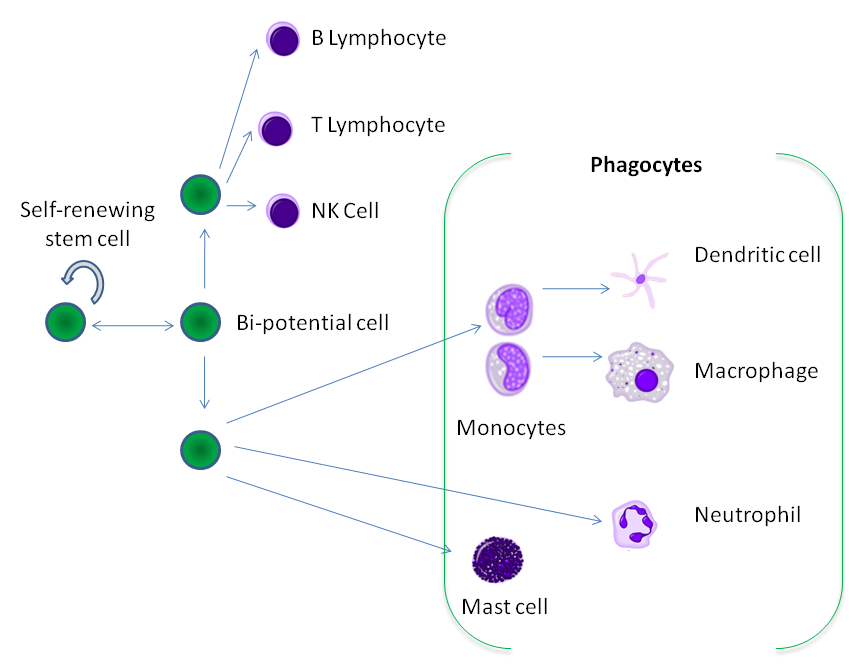Category — 2.7 Children who are Chronically Ill: HIV/AIDS
Children with HIV/AIDS
HIV (Human Immunodeficiency Virus)1 is a virus that attacks the immune system, or the body’s natural defense system. Without a strong immune system, the body has trouble fighting off disease. Both the virus and the infection it causes are called HIV.
White blood cells (Fig. 1) are an important part of the immune system. HIV invades and destroys certain white blood cells called CD4+ cells. If too many CD4+ cells are destroyed, the body can no longer defend itself against infection. Without treatment HIV infection progresses. When the infection is advanced, AIDS (Acquired Immunodeficiency Syndrome) can develop. People with AIDS have a low number of CD4+ cells and get infections or cancers that rarely occur in healthy people.
Figure 1. White blood cells (click on image to enlarge)
The rate of infection for children is low. The virus is primarily passed from mother to child during pregnancy or in utero, or during blood transfusions (see full Glossary). Parents with young children and their educators need to be reassured that their children’s peers and classmates with HIV/AIDS are not contagious.
The needs of children with HIV or AIDS and their families are complex. The world’s largest non-profit organization for children in need, UNICEF has a web page with information for children and families with HIV.
There are many excellent resources online if you want information on HIV and AIDS.
To learn about HIV/AIDS in the middle childhood years, please visit the six to 12 part of this course.
1 Source: HIV and AIDS in Canada: Surveillance Report to December 31st, 2013
https://www.canada.ca/en/public-health/services/hiv-aids/publications/hiv-aids-canada-surveillance-report-december-31-2013.html
January 30, 2011 No Comments
